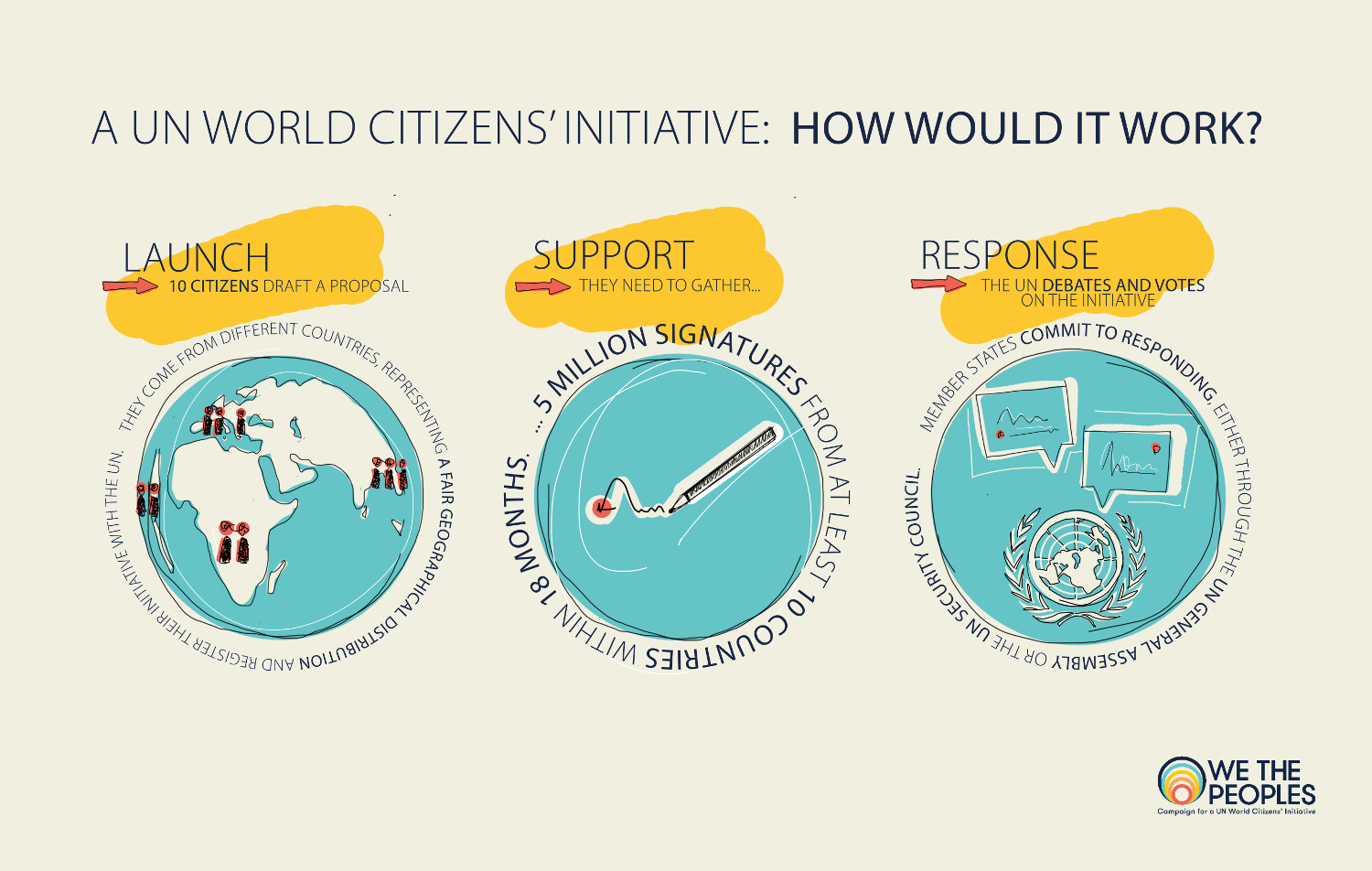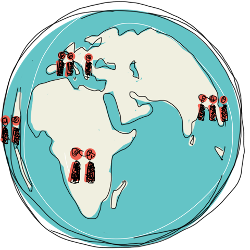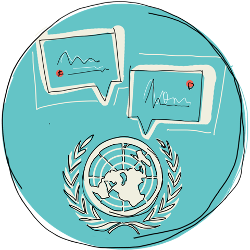
|
|
Step 1: Launching a World Citizens’ Initiative |
|
 |
Ten citizens form a committee to draft their World Citizens’ Initiative proposal and officially register it. To ensure fair geographical representation, the members of the committee have to originate from two African states, three Asian States, one Eastern European State; two Latin American States and two Western European and Other States. This is the same agreed-upon geographical "pattern" that is used to appoint non-permanent seats on the UN Security Council. They draft a concrete proposal and officially register it as a UN World Citizens’ Initiative.
|
|
|
|
Step 2: Collecting support |
|
 |
Once it is registered, the organisers have 18 months to gather five million signatures. To make sure their proposal truly has global support, again their signatures will have to represent a fair geographical distribution: They need to gather signatures from at least 0.5% of the population of two African states, three Asian States, one Eastern European States; two Latin American States and two Western European and Other States.
|
|
|
|
Step 3: Submission & Response |
|
 |
If they manage to do this, the Citizens’ Initiative is automatically placed on the Agenda for the next UN General Assembly, the organisers can present their proposal there and it is voted on by member states OR The Citizens’ Initiative is discussed in the UN Security Council, where the organisers can present their proposal and it is discussed by member states
|
|
|
|
|
|

